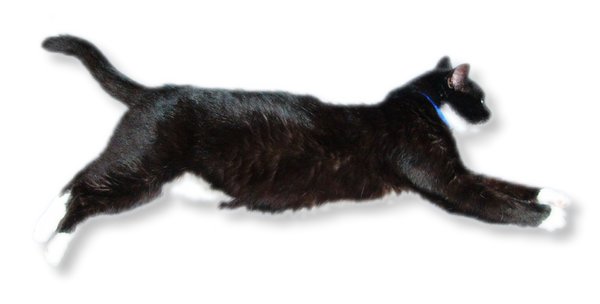5 Essential Elements For cat history

It seems unusual that there was ever a time when cats were not a part of our lives. It's been less that 10,000 years since felines swaggered into our lives. Hardly an eye blink in the grand sweep of life on this world. Why were cats so late to join our team? The easy answer is they didn't require us to make it through. Cats were enduring just great on their own. Then, individuals invented farming. Agriculture led to large scale storage of grains which brought in the typical and popular group of freeloaders, mice and rats. Grain drew in rodents. Rodents attracted felines who consider them tasty meals. The outcome was that cats established housekeeping close to human settlements. Ultimately, felines being cats, moved right on in.
Who were these very first cats? The very first clue depends on where agriculture was very first practiced. Agriculture initially took root (no pun planned) in the Middle East in a terrific sweep from contemporary Turkey to Egypt. Within this location varies the African wild cat, Felis libyca. African wild felines are slightly bigger that our modern house felines and are yellow in color with muted stripes. These felines have a docile, almost laid back nature. Surprisingly, these cats still tend to live and hunt near human homes today. Residents still like to catch and rear young wild cats as family pets. When mature, wild felines raised by human beings tend to behave quite like our familiar housecats. A great case can (and has actually) been advanced designating Felis libyca as the primary founding population for domestic cats. A minimum of 2 other varieties of wild feline are hypothesized to have added to the hereditary make up of domestic cats. One is Felis silvestris, The European wildcat who appears to have actually contributed darker markings and a peppery spirit to the African wild feline base. Likewise, from Asia, comes the Pallas or Steppe cat (Felis manul) that appears to have contributed long-haired coats to the mix.
The early duration of domestication of felines is vague with only patches of proof. Nevertheless, by 6,000 B.C. statues found in Anatolia (modern Turkey) reveal females playing with domestic cats. Felines had actually plainly ended up being common and affectionate animals by that time. The earliest composed records about felines appear by approximately 4,000 B.C. in Egypt where they were frequently kept to hunt mice and rats from kept grains. It was a great time to be a feline in ancient Egypt. Domestic cats were thought to be the embodiment of the goddess Bast (or Bastet). There was a necropolis at her primary temple at Bubastis that consisted of mummified felines.
Romans spread out the domestic feline northward into central Europe and westward to Britain during the expansion of their empire. Cats were quickly adopted and admired as terrific hunters. And they continued to move north and east in Europe. The Vikings utilized felines as both rodent hunters and family pets. The Viking goddess of love and war, Freyja, was associated with cats. Big winged cats drew her chariot. It also became the customized to offer brand-new bride-to-bes a kittycat in her name.
The Middle Ages it were a really hard time to be a feline. Felines were stated to be witches familiars, in league with the devil. Because of this superstition, cats were routinely killed during festivals. In some cases they were even burned alive or shaken off tall buildings. The Europeans paid heavily for their cruelty to felines. The deaths of a lot of felines allowed the rodent population to rise out of control, bringing in the Black Death which killed so much of the European population. Eventually, the cats' cleanly ways and hunting prowess redeemed them in the eyes of the people of Europe. By the 1600s, people in France began putting little holes near the bottom of their doors to allow their more info cats to enter and leave as they please.
In Asia felines continued to recognize hunters and valued family pets. Felines were frequently subjects for drawing and painting in
China. In Japan, cats in the type of Maneki Neko, normally represented as a sitting feline with one paw raised and bent, are considered good luck. They are often found in companies to draw in money.
The history of cats is a fascinating one, worthwhile of a lot more in depth study. It cultivates an gratitude for the personalities and talents of our family pets.